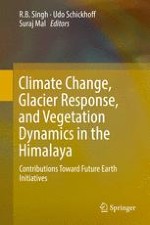2016 | OriginalPaper | Chapter
4. Climate Change and Hydrological Responses in Himalayan Basins, Nepal
Authors : Tirtha Raj Adhikari, Lochan Prasad Devkota
Published in: Climate Change, Glacier Response, and Vegetation Dynamics in the Himalaya
Publisher: Springer International Publishing
Activate our intelligent search to find suitable subject content or patents.
Select sections of text to find matching patents with Artificial Intelligence. powered by
Select sections of text to find additional relevant content using AI-assisted search. powered by
